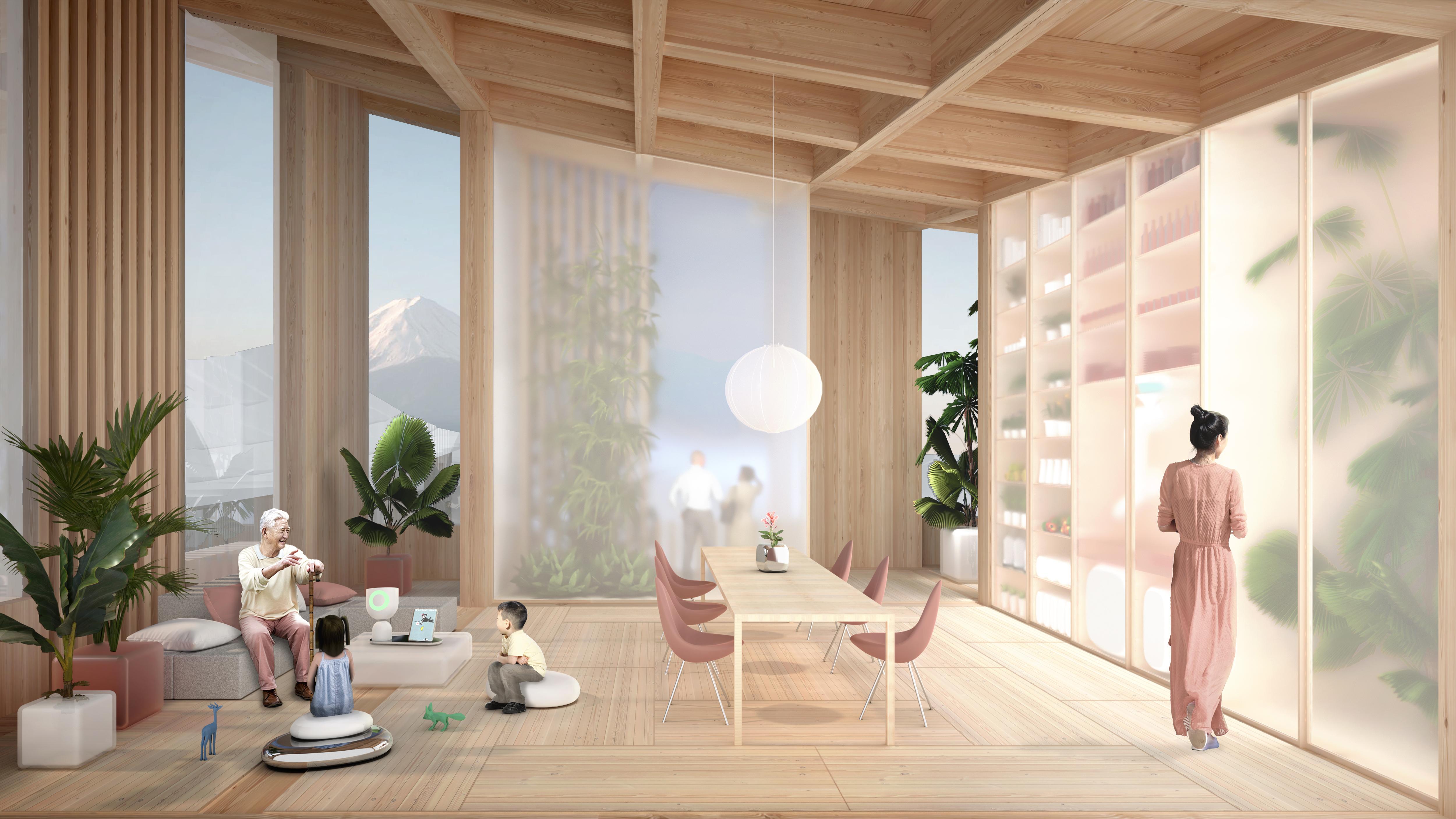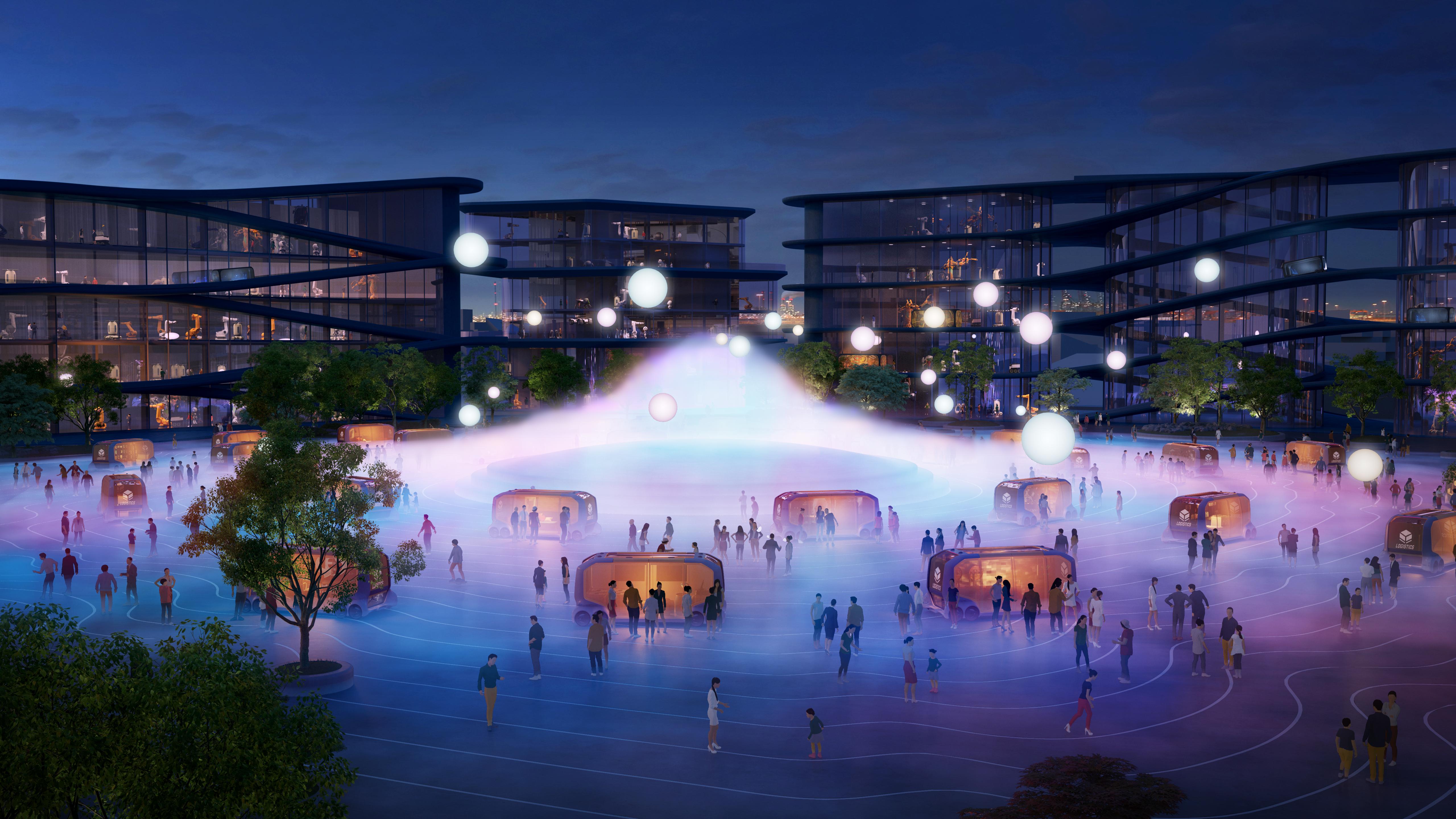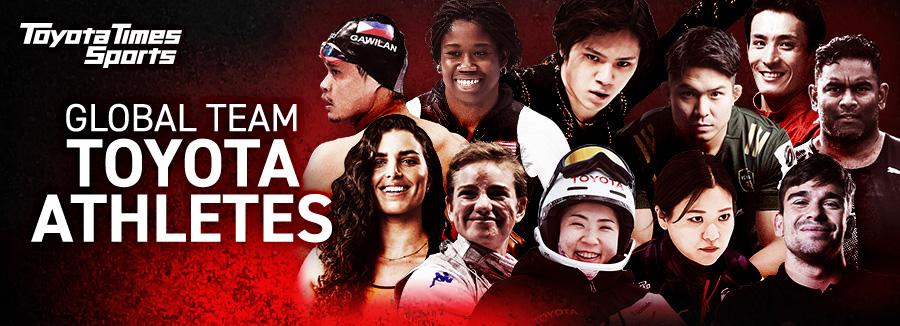The third article in a three-part series showcasing Akio's responses during Toyota's 1H/2Q financial results Q&A session. In Part 3 - the final installment, the focus is on Akio's comments about Woven City, Toyota's prototype city of the future.
The third article in a three-part series showcasing Akio’s responses during Toyota’s 1H/2Q financial results Q&A session. In Part 3 - the final installment, the focus is on Akio’s comments about Woven City, Toyota’s prototype city of the future.
During his speech at CES 2020, Akio announced that “the groundbreaking for the site is planned for early 2021, and construction will begin in phases.” However, details on the progress of this project had not yet been announced publicly.
Since the announcement, the outbreak of COVID-19 has continued to expand, and the environment surrounding Toyota has been changing significantly. So, is the Woven City project proceeding as planned?
A reporter who joined the online financial results briefing asked the following:
Please tell us about the progress of the Woven City. When will it start being built, and when will it be completed? When will it be opened to the public, and when will people be able to start living there? In addition, how many partners are involved in this project?
“The project is making progress steadily,” replied Akio, before explaining the driving force for the project and his involvement in the decision-making process.
How to proceed with work in “an uncharted era”
Akio
I meet with the people in charge [of the “Woven City” project] every three weeks to confirm the direction.
I make decisions on the spot, based on the latest information available, but the rule we have is that it is okay if the decision that I make [that day] is different from what we decided three weeks ago.
The important thing is that we make the most appropriate decision every time we have this meeting, based on the latest situation.
Akio holds a meeting with Woven City project members every three weeks to make important decisions.
During these meetings, members report on matters that have previously been decided, topics that they want decisions made for, and updates on what they are currently working on. They discuss and consult with Akio and the management team.
What is crucial is that discussions and decisions are conducted at every step of the process and repeatedly, rather than examining and evaluating things only after everything is completed.
Through this process, if there are certain societal changes occurring that may have an impact on the project, it is possible to once again review items that were previously discussed and re-establish the direction. This process helps prevent the project from sliding backwards.
Akio commented: “This process is especially good for 'a project in an uncharted era,’ which Toyota has not engaged in before.”
In fact, this is a process that the president himself is also benefiting from.
The origins of Woven City
Akio then went on to talk about the location where the city is to be constructed.
Akio
What is most important is that the area we will be using is where Toyota Motor Corporation East Japan’s Higashi Fuji Plant is currently up and operating.
This plant is scheduled to close next month. As for the employees – some have transferred to the Tohoku Plant. Unfortunately, there are employees who may not be able to move for family or other reasons. For those employees, we are helping them find new jobs.
We have been working with the cooperation of the community and also with the suppliers nearby, trying to stand by each and every individual working in the Higashi Fuji Plant to try to secure a place for them to work.
Since becoming president, Akio has experienced many crises, including posting its first annual net loss after the global financial crisis, followed quickly by Toyota’s recall crisis, and the Great East Japan Earthquake. Despite these incidents, Akio has continued to commit to achieving a domestic car production level of three million vehicles a year.
However, despite all the effort, he was not able to prevent the Higashi Fuji Plant from closing.
In July 2018, Akio attended a meeting at the plant after the decision to close the Higashi Fuji Plant was made. There, he spoke directly with employees from the plant and touched upon the “connected city” concept that led to Woven City.
“The Higashi Fuji Plant can [still] contribute to the future of automobiles. I am thinking of transforming this place into a connected city. This is still at a conceptual stage, but I think if we have the will, we can create this city.”
While the plant may be closing, Akio envisions the site as an important link to the future. That was the sentiment behind the origin of the prototype city project, Woven City.
Groundbreaking at Mount Fuji
After that response to the journalist, Akio then began to reveal the progress of Woven City, including details which had never been publicly revealed. First, Akio talked specifically about the highly anticipated groundbreaking day.
Akio
I previously mentioned that the groundbreaking [for Woven City] would happen next year, and I was told by the public relations team to not offer any specific dates.
But I'd like to say that I want to set the commencement date to be February 23. The reason why it's February 23 is because it's 2-2-3. When you read that date in Japanese, it reads Fuji-san (or Mt. Fuji). So, this date feels like it could fit well with the project.
We are building our new city at the base of Mt. Fuji. And I'd like to tell everyone that we're preparing for this to happen on February 23.

What will happen here at this site? Well, for us, we have announced that we are in the process of transitioning into a mobility company. So, we are planning to utilize this location to develop products that can be of value in the future.
One such product will most likely be automated vehicles.
However, we do not merely want to develop an automated vehicle, but develop one that is integrated into the city’s infrastructure. By having the vehicle integrated with the infrastructure, the speed of development should also accelerate significantly.
Within that, I think it is big news for me to say that we have created one of the basic units that will be used to create Woven City.
The basic unit mentioned is in reference to one block of the city, set to be 150 meters by 150 meters. The unit will have three roads “woven” at ground level and one underground.
Of the three roads at ground level, one will be a road dedicated solely for autonomous vehicles. Another [above ground] road will be dedicated for pedestrians, and the third [above ground] road will be shared by small mobility and pedestrians.
Doing this will make it much easier to secure the level of safety needed for autonomous driving vehicles.
On the ground level, as one would expect, there'll be different weather conditions, including sunny, rainy, hot, and cold. The conditions of the [above ground] roads change depending on the weather conditions. But underground, we can test vehicles without changes in road conditions caused by the weather.
The ground level will have roads for the movement of people, but the underground will be for the movement of goods. Since underground road conditions will not change, that road can be used for testing the simplest level of automated driving.
Residents of the future city
Akio continued in his response at the briefing to reveal the number and type of residents he expects to have there.
Akio
We're thinking of having around 360 residents living in this city composed of three roads. The residents will consist of elderly people, families and inventors. In a sense, the elderly people and families, I believe, are the main demographic groups that are facing social challenges.

We want to have the inventors living together with the aforementioned demographics so that they would be able to invent things that will be helpful to resolving the challenges that the elderly and families face.
These inventors will have a set period of time where they can work on their mission. Then, if they cannot produce results in that period of time, they will be replaced by other inventors. As such, we're trying to build a mechanism to allow this place to always be actively innovating.
Currently, we have received applications from about 3,000 individuals and corporations who want to become a partner with us for Woven City.
Because the Woven City Project is a “living laboratory”, it will be an ever-evolving city that will never truly be considered “finished”.
Our ultimate goal is to develop safe mobility. And we want to be centered on people.
So we want future mobility to be created together with infrastructure. In order to do that, we, as an automobile company cannot do it alone, and so we are recruiting as many partners as possible.
As an unfinished city, we ask for your understanding that it will be an ever-evolving living laboratory, and I'd like you all to participate in any way that you can. We want to create the future together with you. Please continue to look forward to more on this project.
During the most recent financial results briefing, Akio was also asked about how he felt about the current situation after the outbreak of COVID-19. He gave the following response:
“When we went through previous crises including the global financial crisis and the Great East Japan Earthquake, I remember that we immediately put the brakes on various projects. We withdrew all new projects. However, this time, instead of stopping everything, we have decided to continue business as usual.”
Previously Toyota Times has covered and explained the changes in Toyota from the time of the global financial crisis to the current situation with the COVID-19 pandemic.
However, this time, Akio explained Toyota’s outlook on its “Woven City” project that will forge the future of mobility.
Even being able to share that outlook is another demonstration revealing just how much Toyota has evolved over the past eleven years.[Related links]
<1H/2Q financial results Q&A session>
・With an eye toward "Producing Happiness for All" - Selections from the Q&A session of Toyota's 1H/2Q financial results briefing
・"The customer will choose": Vehicle electrification strategy for decarbonation - Selections from Toyota's 1H/2Q financial results Q&A session
<1H/2Q financial results>
・4 Noteworthy Points on Toyota's First-Half Financial Results
・Toyota FY2021 1H Financial Results - Why Akio Attended

